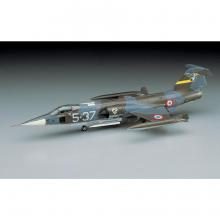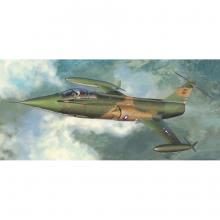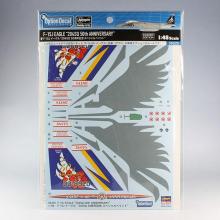Shipping and Returns
Europe, UK: Tuesday, Nov 18 ~
USA: Sunday, Nov 16 ~
Australia: Tuesday, Nov 18 ~
Asia: Monday, Nov 17 ~
UAE: Tuesday, Nov 18 ~
Order within 4 Hours 10 mins with Scheduled Delivery. If you place an order within this time, We will ship Monday, Nov 17 2025. This delivery time is calculated by DHL and FedEx. You can check the exact delivery date on checkout page.
USA: Sunday, Nov 16 ~
Australia: Tuesday, Nov 18 ~
Asia: Monday, Nov 17 ~
UAE: Tuesday, Nov 18 ~
Order within 4 Hours 10 mins with Scheduled Delivery. If you place an order within this time, We will ship Monday, Nov 17 2025. This delivery time is calculated by DHL and FedEx. You can check the exact delivery date on checkout page.
Buyer Protection
Full refund if not genuine. Full or partial refund, if the new item is not as described.
Customer Reviews (0 rating)
No reviews on this item...
Description (2,498 characters)
Released in December 2021
HASEGAWA 1/32 Nakajima Type 1 Fighter Hayabusa. HST3 Hayabusa Released in December 2021
[Product Introduction]
HASEGAWA 1/32 Nakajima Type 1 Fighter Hayabusa. In December 1939, when the Nakajima Type 97 fighter (Ki-27) was adopted, the Army issued instructions to Nakajima 1 Company to prototype the next fighter (Ki-43). The first prototype was completed in December of the following year, and test flights showed that although its maximum speed was approximately 30km/h faster than the Type 97 fighter, its maneuverability was poor and it was insufficiently powerful as a next-generation fighter. Afterwards, various modifications were made, such as changing the wing area and replacing the engine, and 13 aircraft (3 prototypes, 10 additional prototypes) were completed by September 1942. I couldn't convince them. However, at that time, the General Staff believed that a long-range fighter plane was needed to support the convoy in order to capture Singapore during the southern invasion operation, and the Ki-43, which was about to be labeled as a failure, was used as a long-range fighter plane. A way out was found. In April 1940, the modified aircraft was tested and achieved the required cruising power, and it was also excellent in vertical combat, so it was decided to be adopted as a Type 1 fighter in May 1943, and from June of the same year, the 8 Approximately 30 Type I aircraft were received by the 59th Flight Squadron over the month. The Hayabusa I type was mainly deployed in the Burma area and greatly contributed to the successful advance in the early stages of the war. The Type II fighter jet had an engine replaced with a Ha-115, the aircraft design was refined, and various performance improvements were made. When the Type II fighter was actually deployed, it had an advantage over the Buffalo, Hurricane, P-40, etc. However, it was forced to struggle against the later Spitfire and P-38. However, it was the easiest to handle among the Army fighter aircraft at the time and had a high availability rate, so mass production continued until the end of the war.
[Actual aircraft data]
Crew: 1 person Overall width: 10.84m Overall length: 8.92m (horizontal attitude) Overall height: 3.27m (horizontal attitude) Main wing area: 21.4m2 Complete weight: 2590kg Engine: Nakajima Ha115 takeoff Output: 1120hp Maximum speed: 515km/h/6000m Armament: 12.7mm machine gun x2
[Product specifications]
1/32 scale unpainted assembly kit□
HASEGAWA 1/32 Nakajima Type 1 Fighter Hayabusa. HST3 Hayabusa Released in December 2021
[Product Introduction]
HASEGAWA 1/32 Nakajima Type 1 Fighter Hayabusa. In December 1939, when the Nakajima Type 97 fighter (Ki-27) was adopted, the Army issued instructions to Nakajima 1 Company to prototype the next fighter (Ki-43). The first prototype was completed in December of the following year, and test flights showed that although its maximum speed was approximately 30km/h faster than the Type 97 fighter, its maneuverability was poor and it was insufficiently powerful as a next-generation fighter. Afterwards, various modifications were made, such as changing the wing area and replacing the engine, and 13 aircraft (3 prototypes, 10 additional prototypes) were completed by September 1942. I couldn't convince them. However, at that time, the General Staff believed that a long-range fighter plane was needed to support the convoy in order to capture Singapore during the southern invasion operation, and the Ki-43, which was about to be labeled as a failure, was used as a long-range fighter plane. A way out was found. In April 1940, the modified aircraft was tested and achieved the required cruising power, and it was also excellent in vertical combat, so it was decided to be adopted as a Type 1 fighter in May 1943, and from June of the same year, the 8 Approximately 30 Type I aircraft were received by the 59th Flight Squadron over the month. The Hayabusa I type was mainly deployed in the Burma area and greatly contributed to the successful advance in the early stages of the war. The Type II fighter jet had an engine replaced with a Ha-115, the aircraft design was refined, and various performance improvements were made. When the Type II fighter was actually deployed, it had an advantage over the Buffalo, Hurricane, P-40, etc. However, it was forced to struggle against the later Spitfire and P-38. However, it was the easiest to handle among the Army fighter aircraft at the time and had a high availability rate, so mass production continued until the end of the war.
[Actual aircraft data]
Crew: 1 person Overall width: 10.84m Overall length: 8.92m (horizontal attitude) Overall height: 3.27m (horizontal attitude) Main wing area: 21.4m2 Complete weight: 2590kg Engine: Nakajima Ha115 takeoff Output: 1120hp Maximum speed: 515km/h/6000m Armament: 12.7mm machine gun x2
[Product specifications]
1/32 scale unpainted assembly kit□










